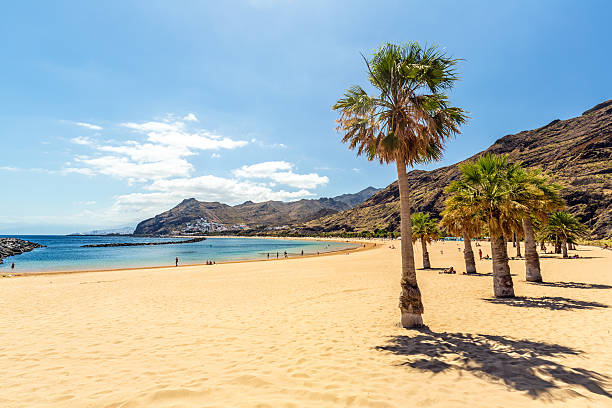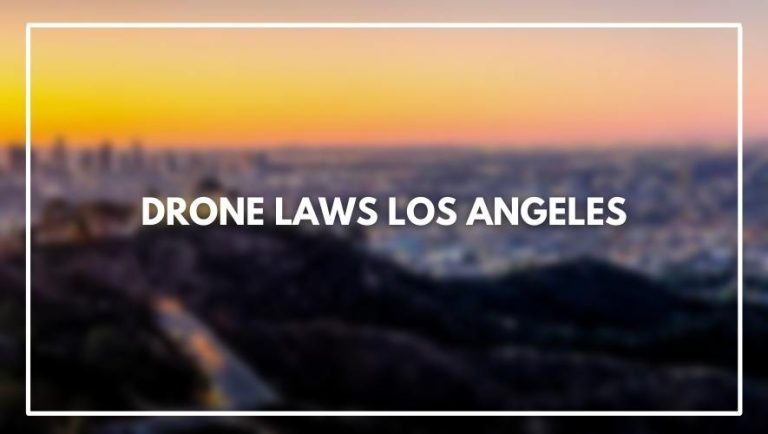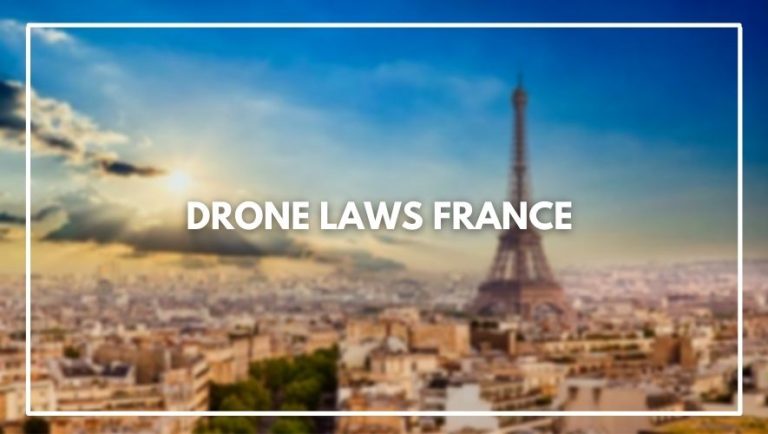If you’re planning on renting a drone in Tenerife, then it’s important to know about the Canary Islands drone laws. We’ve put together an easy guide that’ll help you get started.
Summary of The Drone Laws in Tenerife
- Flying over people is not allowed without explicit permission.
- Stay away from aviation routes, airports and keep drone at a safe distance from people and property.
- Never fly above 400 feet altitude.
- Respect people’s privacy and avoid flying over their homes, gardens and swimming pools.
- Always keep your drone in sight and report to police if lost.
- Check the weather before flying a drone and make sure it’s fully charged before take-off.
Drone Laws Tenerife

Flying Over People Is Not Allowed
Flying over people is not allowed. If you are flying in a public place, it is illegal to fly over people. However, if you are flying in a private place (such as your backyard or garden) with permission from the owner of that property and it has been cleared with Tenerife’s Civil Aviation Authority beforehand, then you may fly over people.
Please note that this does not apply to private places without permission from the owner of that property; if you do so without permission from the owner of said property, then your drone could be confiscated by authorities and fines will be issued against your name.
Stay Away From Aviation Routes And Airports
You must respect the following rules:
- Stay away from aviation routes and airports. If you fly over an airport, you will be fined.
- Keep your drone at a safe distance of 150 metres (492 feet) from people and property, unless there is an explicit permission or special permit allowing otherwise.
- You must not fly your drone above 400 ft (122 m).
Never Fly Above 400 Feet Altitude
One of the easiest ways to get caught out by the law is flying too high. The maximum altitude you can fly your drone at is 400 feet, which is a lot lower than most people think it should be.
You might think that there’s no point in flying higher than 400 feet because nobody will see your drone, but if you’re in an area where there’s a lot of air traffic then this could cause problems for other aircraft who are using their own visual flight rules (VFR).
If you want to avoid any problems with other aircraft and make sure that your drone doesn’t come into contact with anything else while it’s in the air, keep it under 400 feet!
Respect People’s Privacy And Avoid Flying Over Their Homes
don’t Fly Over People’s Homes
It should go without saying, but you should avoid flying your drone over people’s homes. This is an invasion of privacy and could be considered harassment if the drone was flown close to someone’s window or balcony.
don’t Fly Over People’s Gardens
The same rules apply if you’re flying in a garden (or any other private space). If they could see you from their window, it would be considered harassment and it might even count as spying.
This can also lead to legal trouble if your drone crashes into something or it hits someone who wasn’t expecting it to come crashing down on them!
don’t Fly Over People’s Swimming Pools
Swimming pools are like giant jacuzzis for humans—they’re private spaces where only those who are invited can enter. You definitely don’t want drones dropping onto unsuspecting swimmers in an attempt at being funny (this has happened before), so make sure to keep clear of them using the same rules as above!
Always Keep Your Drone In Sight
It is a good idea to only fly your drone when there are no people or vehicles around.
Your drone should always be within visual line of sight (VLOS) at all times. This means that you must be able to see it and be able to take control of it if necessary, such as if it is about to come into contact with another aircraft or a person.
If you lose sight of the drone for any reason—it flies out of range, gets caught up in bad weather or crashes—you should land immediately and never attempt to retrieve it yourself if you think there may be other aircraft in the area because this could put both yourself and others at risk!
If You Lose Your Drone, You Should Report This Immediately To The Police
If you lose your drone, it is important that you report the loss to the police as soon as possible. You should also make sure that your drone is fully charged before flying it.
You should not fly over people or schools or hospitals and especially not over airports or military bases.
The weather conditions must be good for flying a drone in Tenerife. It is not advisable to fly when there are strong winds, rain or fog on Tenerife because this can damage your drone and cause injury to people.
Always check with an aviation authority before flying above 400 feet altitude
Check The Weather Before Flying A Drone
We recommend that you always check the weather before flying a drone. If there are thunderstorms or heavy rain, it could be unsafe to fly your drone outdoors.
If you do want to fly your drone in bad weather, make sure it’s fully charged and has plenty of battery life left – otherwise, if the conditions worsen, you might not have enough power for a safe take-off or landing.
Always Make Sure That The Drone Is Fully Charged Before Flying It
Before you fly your drone, make sure that the battery is fully charged. The battery life of a drone depends on many factors: weather, weight of the drone and distance from the controller. The more windy it is, the less time a battery will last.
A heavier drone will require more power than a light one to keep it in flight for any length of time. A long distance between yourself and your controller will also affect your battery life because signals take longer to travel over long distances.
How To Register Drone In Tenerife?
If you are planning to travel to Tenerife, it is important to find out how to register drone there. That’s because flying a drone in the area without registering your device could result in fines and other penalties. Read on for more information about the process of registering drones in Tenerife.
what Do I Need To Register My Drone In Tenerife?
To register your drone, you will need the following documents:
- The name and address of the owner
- A valid passport or identity card
- Proof of address (utility bill or lease agreement)
- Proof of payment (bank statement or credit card statement with a Tenerife address)
- Proof that you are the aircraft’s owner (a copy of a title deed will be sufficient)
how Can I Register My Drone In Tenerife?
If you have bought a drone from Tenerife, or if you are a resident and would like to buy one, then it is important that you know how to register your drone in Tenerife. The process of registering is not complicated and can be completed in less than an hour.
To register your drone in Tenerife, all that is needed is an identification card or passport with which they can verify the information entered by the seller.
In addition, there must also be proof of payment made by credit card or debit card and this will include both the shipping address as well as where it will be used when flying outdoors (i.e., mountains).
how Much Does It Cost To Register A Drone In Tenerife?
You can pay for your drone registration online or in person at the police station. You can also pay by phone, by card or cash, via bank transfer, or by cheque.
The cost of registration is €20 per drone and will be valid for five years from the date it was issued.
know The Rules First
It is not hard to become a drone pilot in Tenerife. But you need to know the rules first.
You must be over 18 years old and have a drone of your own. You can’t borrow one from anyone else because this would make it very difficult for the authorities to determine who was flying it at any time.
You also need to have a pilot certificate, which is usually obtained by taking an online course or attending classes given by local schools or companies with certified instructors on their staff that teach drone pilots how to fly safely and legally within national airspace laws and regulations (such as those established by EASA).
Once you’ve completed your training and received your certification, it’s time for step three: registering your drone(s) with the government agency responsible for overseeing air travel across Tenerife (the Directorate General of Civil Aviation).
This means submitting paperwork showing proof that both parties agree on who owns what before they’ll issue an official license allowing them both access within certain areas such as public parks where most people enjoy congregating during their leisure time during weekends .
Are Drones Allowed In Tenerife?
Drone enthusiasts can be pretty particular about their flying plans. Is the weather too windy? Are there enough clear skies? Even if you’re just traveling to Tenerife for vacation, though, you might want to know whether your favorite hobby will be legal in this beautiful Spanish island.
Are Drones Allowed In Tenerife?
Drones have been banned in Tenerife since 2015. This means that if you want to fly a drone in the whole of Tenerife, you must have a drone license and be licensed by the Civil Aviation Authority.
The Spanish Civil Aviation Authority has banned drones from being flown in any public place (for example streets, parks and beaches). Drones can also only be flown over private land with permission from the owner of that land.
what Are The Rules For Flying Drones In Tenerife?
The rules for flying drones in Tenerife are pretty lax. You must be over 18 years old, and you must fly the drone no higher than 150 meters from the ground.
You also have to keep your drone at least 150 meters away from any person, building or vehicle. This includes boats as well.
who Enforces Drone Laws In Tenerife?
The Guardia Civil is a military force under the authority of the Ministry of Defence and is responsible for enforcing laws and regulations in Tenerife. It’s also responsible for investigating crimes.
The Guardia Civil has its headquarters at Plaza de España in Santa Cruz de Tenerife, so if you’re wondering how you can report anyone flying a drone illegally or causing problems with their drone, the answer is easy: just head over there!
do I Need To Register My Drone For Commercial Or Non-commercial Use?
If you are using your drone for commercial purposes, then you must register it. This applies whether or not the drone is being used in a remote area or flying over people.
If you are operating your drone for non-commercial reasons, then registration is optional.
In some cases, registration may be required even if you do not intend to use your aircraft commercially.
For example if you own a model aircraft that weighs more than 7 kg (15 lbs) and have modified it with any kind of payload attachment/tooling/sensor etc., then this will also require registration before flying outdoors in public areas as per manufacturer recommendations (this includes drones used for filming).
what Are The Penalties For Breaking Drone Rules?
Penalties for breaking drone rules vary depending on the severity of the offense. A fine from €100 to €200,000 is possible for failing to follow safety regulations or causing an accident with a drone.
Depending on the circumstances, a prison sentence of up to six years could be imposed for flying drones in restricted areas such as military bases or nuclear facilities.
Similarly, if you fly your drone in an airport and it causes damage or injury, then you could face a fine and/or one-year imprisonment. If you fly a drone over police operations without permission (for example), then there could be fines of up to €30,000 and/or two years behind bars awaiting your punishment.
what’s The Best Place To Fly Drones In Tenerife?
In general, you can fly drones in Tenerife but there are some rules that have to be followed. You have to know that there are many places where it is allowed and others where it is not. In particular, when you want to fly your drone, you must remember not to do it near an airport or over an area with public traffic.
Here are the best places for flying a drone:
- The Parque Natural del Teide (El Teide National Park)
- Los Gigantes Beach
- La Gomera Island
Drone Laws In Gran Canaria
Drone use is allowed in Gran Canaria, but several drone laws need to be followed when flying in the country.
- Operators must ensure that their drones weigh less than 10kg and stay below 120 meters (400 feet) in altitude.
- It is also important to keep the drone within visual range at a maximum of 100 meters.
- Additionally, drones may only be flown during the day, unless it weighs less than 2 kilograms (4.4 pounds). Those who wish to fly at night must obtain permission from the Spanish Civil Aviation Authority (AESA).
- Registration is mandatory for all drone operators unless the drone weighs less than 250 grams and is not equipped with sensors to capture images or videos.
It is also important to note that certain areas of Gran Canaria are off-limits for drones due to airspace restrictions. These areas include airports, military bases, and nature reserves. Therefore, operators need to check flight restriction zones before flying their drones to avoid any legal issues or fines.
Conclusion
In conclusion, drones are a great way to capture moments that you can’t get from the ground. However, there are some rules and regulations in place for drone use in Tenerife so remember to follow these guidelines before flying your drone!
Frequently Asked Questions (drone Laws Tenerife)
are Drones Legal In Tenerife?
Yes, drone flying is legal in Tenerife. If you want to fly your drone in this beautiful island, then you need to register it with the Civil Aviation Authority (CAA). You also have to follow their rules and regulations along with other laws about drones such as not flying above 400 feet, not flying within 50 meters of crowds or buildings etc.
If you have any questions or need more information on registration then please contact us here at Drone Lawyer UK or click here for our guide on registering drones in the UK.
how Much Does A Drone Cost Tenerife?
The cost of a drone depends on the model you choose, as well as its size and quality. There are many different types of drones available, so it is important to know what you want before you buy. Without knowing how much money you want to spend on your new toy, it can be difficult to make an informed decision about which type of drone will suit your needs.
what’s The Best Drone For Beginners?
The best drone for beginners is a quadcopter. The one that I would recommend to my friends as their first model is the DJI Spark.
Why? Because it’s easy to fly, has lots of features and is also cheap compared to other models like the DJI Mavic Air or Pro, so it won’t hurt your bank account too much if you decide to buy one.
what Are The Rules About Flying Drones In Tenerife?
If you are flying a drone in Tenerife, there are some rules that you must follow:
- You cannot fly your drone above an altitude of 120m
- You must not fly your drone within 50m of people or buildings.
- If your drone has been approved by the CAA, it may be allowed to fly at an altitude of 150m or more. However, this is only permitted if the person flying it has completed specific training and obtained a permit for their particular area.
- Also keep in mind that airports have restricted areas where drones must not enter. Always check with local authorities before flying near an airport!
can I Fly A Drone In The Canary Islands?
Yes, you can fly a drone in the Canary Islands as long as you adhere to the local laws and regulations. You must not fly your drone over people or large crowds, and if your drone weighs more than 2 kg you will need to have a pilots license and go through a registration process.
can You Fly Drones In Gran Canaria?
Yes, drones can be flown in Gran Canaria as long as they are flown during the day and stay within visual range of the pilot. Drones may also be flown at night if they weigh less than 2 kilograms (4.4 pounds).
where Can I Fly A Drone In Tenerife?
You can fly a drone in Tenerife as long as you follow the local laws and regulations. These include staying away from aviation routes and airports, never flying above 400 feet altitude, respecting people’s privacy and not flying over people or large crowds.

![Drone Laws NSW [March 2023] [Rules & How to Register]](https://discoveryoftech.com/wp-content/uploads/2022/05/drone-93-768x434.jpg)


![Drone Laws Pakistan [March 2023] [Rules & How to Register]](https://discoveryoftech.com/wp-content/uploads/2022/05/drone-94-768x434.jpg)

![Drone Laws Vermont [March 2023] [Rules & How to Register]](https://discoveryoftech.com/wp-content/uploads/2022/08/drone-27-768x434.jpg)